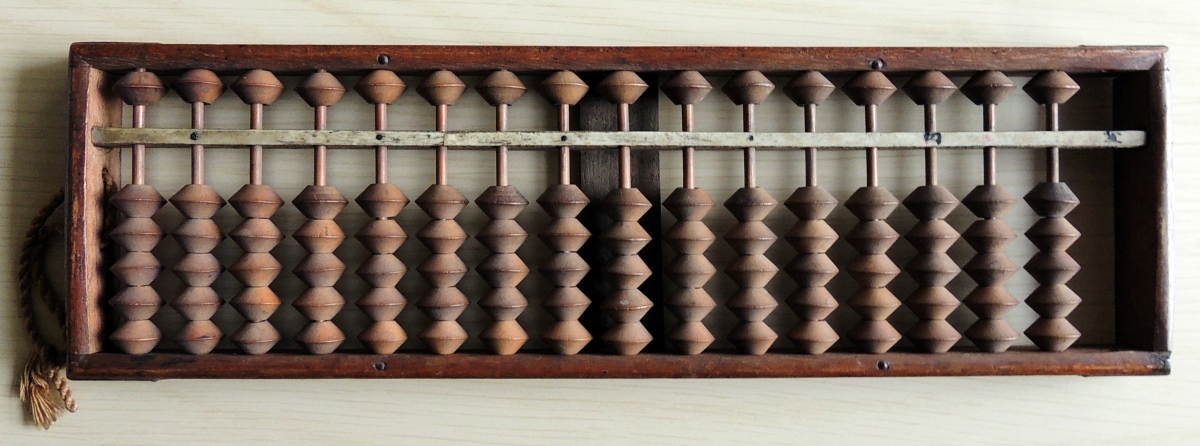- About MAA
- Membership
- MAA Publications
- Periodicals
- Blogs
- MAA Book Series
- MAA Press (an imprint of the AMS)
- MAA Notes
- MAA Reviews
- Mathematical Communication
- Information for Libraries
- Author Resources
- Advertise with MAA
- Meetings
- Competitions
- Programs
- Communities
- MAA Sections
- SIGMAA
- MAA Connect
- Students
- MAA Awards
- Awards Booklets
- Writing Awards
- Teaching Awards
- Service Awards
- Research Awards
- Lecture Awards
- Putnam Competition Individual and Team Winners
- D. E. Shaw Group AMC 8 Awards & Certificates
- Maryam Mirzakhani AMC 10 A Awards & Certificates
- Two Sigma AMC 10 B Awards & Certificates
- Jane Street AMC 12 A Awards & Certificates
- Akamai AMC 12 B Awards & Certificates
- High School Teachers
- News
You are here
Elementary Soroban Arithmetic Techniques in Edo Period Japan
Overview
In this article, we introduce methods for doing basic arithmetic on the Japanese abacus – known as the soroban – as used during the Edo period (1603–1868 CE). Our instructions are informed by the first two books of the Taisei Sankei (Great Accomplishment of Mathematics), a mathematical work compiled by Seki Takakazu (d. 1708) and his students, the brothers Takebe Katahiro (1664–1739) and Takebe Kataakira (1661–1716), between 1683 and 1711 CE.
The soroban was the most common tool for calculation during the Edo period, used by merchants, farmers, and mathematicians alike to calculate everything from the cost of exchanging silver into gold to calculating the value of \(\pi.\) In this article, we will introduce the common techniques for doing basic arithmetic on the soroban in the traditional style, so modern students, mathematicians, and historians alike can see how this device was used for over 250 years in Japan. We also provide a series of exercises in Section III for those who wish to try applying the techniques to traditional Edo period problems.
Read the article, Elementary Soroban Arithmetic Techniques in Edo Period Japan (pdf).
The oldest known soroban (pictured below) is the Shibei Shigekatsu Hairyo soroban from 1591 CE.

The beads on each vertical bar, when moved toward the horizontal bar, represent a base 10 place value with, for instance, the 1000s place to the left of the 100s place. Beads above the horizonal bar have a value of 5 while beads below it have a value of 1.
In the Meiji period (1868–1912), soroban began to be constructed with just one bead above the horizontal bar in each place. The abacus shown below (from the collection of the first author) is from the Meiji period or the subsequent Taishō period (1912–1926).

Modern soroban, like the one pictured below, have just one bead above the horizontal bar and 4 beads below it in each place.

For each example of each arithmetic operation, even those taken from the Edo period Taisei Sankei, we will explain how to complete the problem using the modern abacus because this is the type the reader will most likely have at hand.
Read the article, Elementary Soroban Arithmetic Techniques in Edo Period Japan (pdf).
Rosalie Joan Hosking, Tsukane Ogawa, and Mitsuo Morimoto (Seki Kowa Institute of Mathematics, Yokkaichi University), "Elementary Soroban Arithmetic Techniques in Edo Period Japan," Convergence (June 2018), DOI:10.4169/convergence20180601




